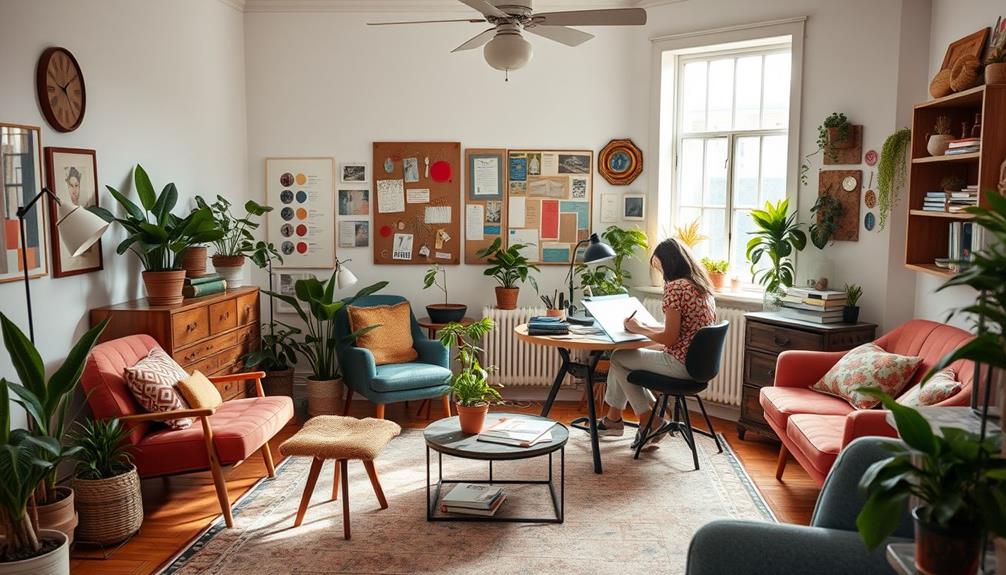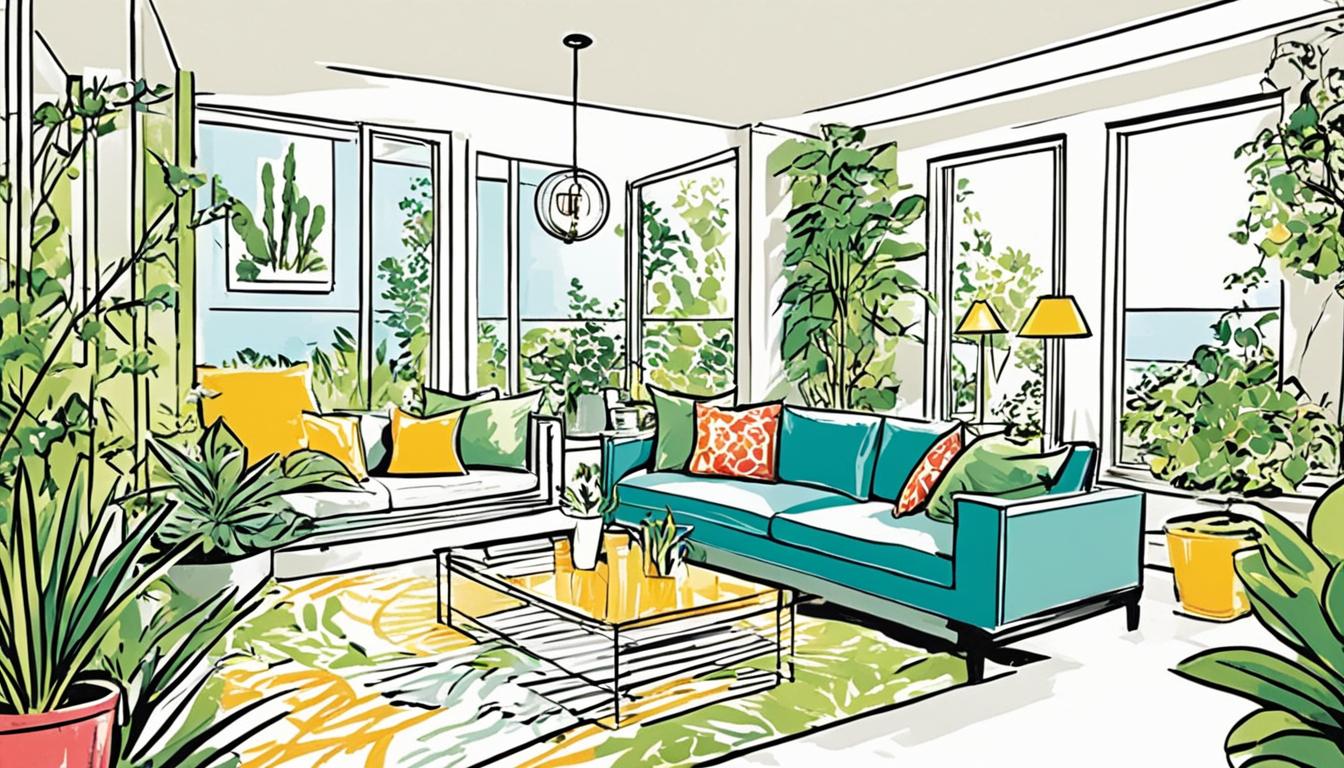To know if interior design is for you, assess your passion for creativity and spatial arrangement. Enjoying color theory and having a knack for problem-solving are significant indicators. Consider the time and financial commitment—most programs take 5-6 years and can be costly. Reflect on your interpersonal skills as success hinges on effective communication with clients. If you find joy in transforming spaces and staying up-to-date with design trends, this could be your path. Want more insights on whether you're suited for this field? There's plenty more to explore on what it takes to thrive in interior design.
Key Takeaways
- Assess your passion for arranging spaces and sourcing unique furnishings, indicating a natural inclination towards design.
- Evaluate your artistic skills, such as color theory knowledge and spatial visualization, essential for creating appealing designs.
- Consider your technical abilities, including proficiency in CAD software and understanding building codes, crucial for successful interior design.
- Reflect on your interpersonal skills, like effective communication and active listening, which are vital for collaborating with clients and contractors.
- Determine your commitment to continuous learning and adaptability to design trends, ensuring relevance in the evolving field of interior design.
Commitment of Time and Money
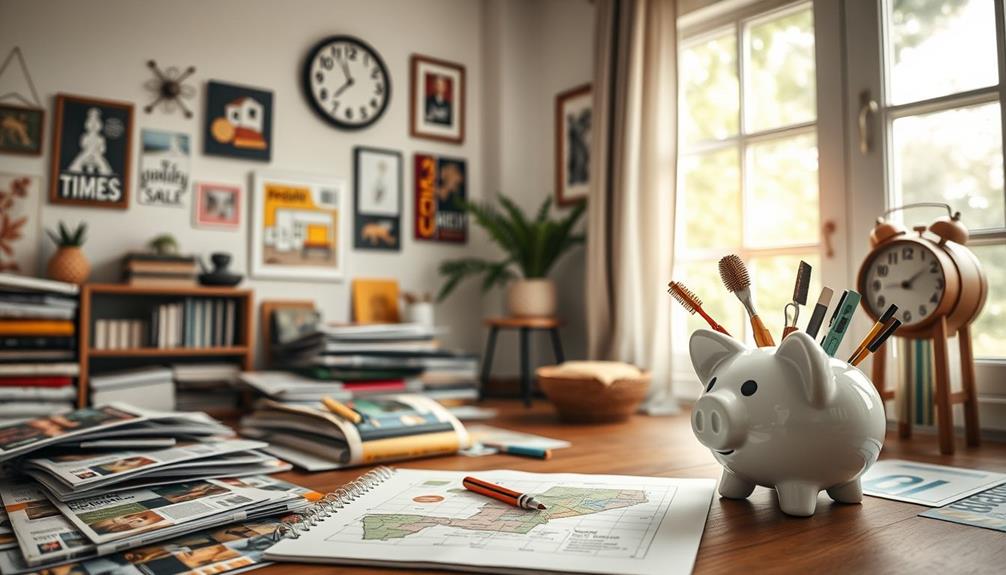
When you consider becoming an interior designer, you need to be ready for a significant commitment of both time and money. Typically, this commitment involves investing 5-6 years into your education, which can include a 2-year associate degree or a 4-year bachelor's degree in interior design.
The financial aspect is equally important; the average annual tuition and expenses for pursuing this degree can reach about $20,000, with fees for full-time undergraduates averaging around $18,250 for the 2019-2020 academic year.
As you weigh your options on this interior design career path, think about the long-term implications of your investment. While the median annual wage for interior designers was reported at $57,060 in 2020, it's essential to recognize the range of earnings in this field.
The lowest 10% earned less than $33,000, while the highest 10% made over $97,920. Understanding these factors can help you assess whether you're prepared to embrace the commitment of time and money required to succeed in this dynamic and rewarding profession.
Salary Expectations for Designers
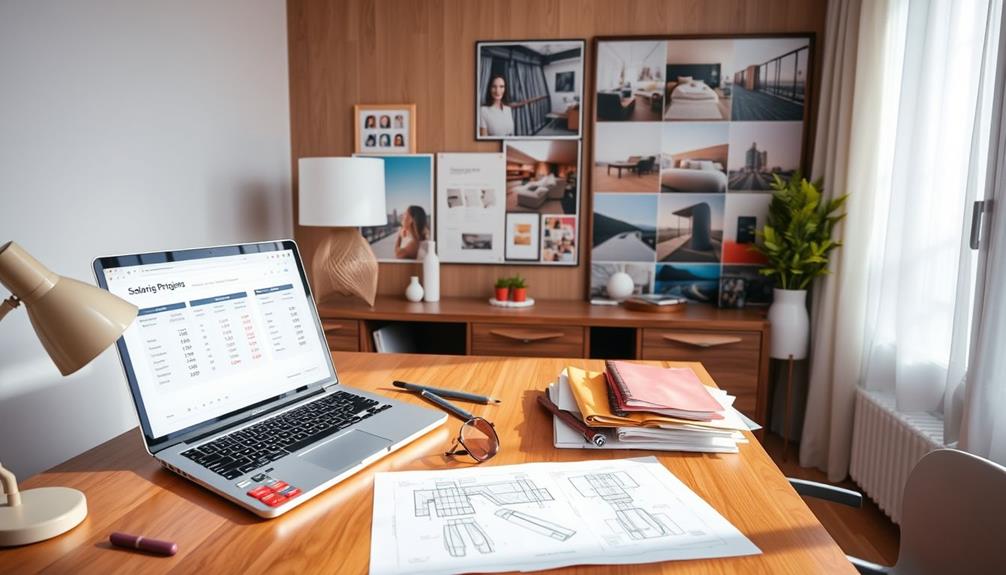
Many aspiring interior designers wonder about the salary expectations in this field. Understanding potential earnings can help you make informed decisions about your future.
In 2020, the median annual wage for interior designers was $57,060, which shows solid earning potential. However, salaries can vary widely based on several factors:
- The lowest 10% earned less than $33,000 annually.
- The highest 10% earned over $97,920, indicating significant financial rewards are possible.
- Salary expectations can be influenced by geographic location and industry growth.
- Your individual skill level and experience play a fundamental role in determining your income.
- Balancing the time and financial investment in your education against potential earnings is essential.
Keep in mind that while the average can give you a glimpse of what to expect, your actual salary could differ.
As you consider a career in interior design, weigh these factors carefully to set realistic salary expectations while pursuing your passion. With dedication and the right opportunities, you can find yourself among the higher earners in this rewarding profession.
Essential Skills for Success

Mastering essential skills is important for achieving success in interior design. One key skill you'll need is proficiency in Computer-Aided Design (CAD) software. This technical skill allows you to create accurate design plans and visualize spaces effectively.
Additionally, having a strong understanding of best practices in software quality assurance can enhance your project management approach. Strong communication skills are also significant; they enable you to collaborate seamlessly with clients, architects, and contractors, ensuring your design visions come to life.
Detail orientation can't be overlooked either. Being meticulous with measurements and execution is essential, as even minor errors can derail a project.
Additionally, having a solid understanding of business concepts is important. Successful interior designers need sales skills and project management expertise to attract clients, negotiate contracts, and manage logistics efficiently.
While artistic abilities are fundamental, honing these essential skills will set you apart in the competitive world of interior design. By focusing on these areas, you'll not only enhance your capabilities but also increase your chances of thriving in this dynamic field.
Artistic and Creative Abilities
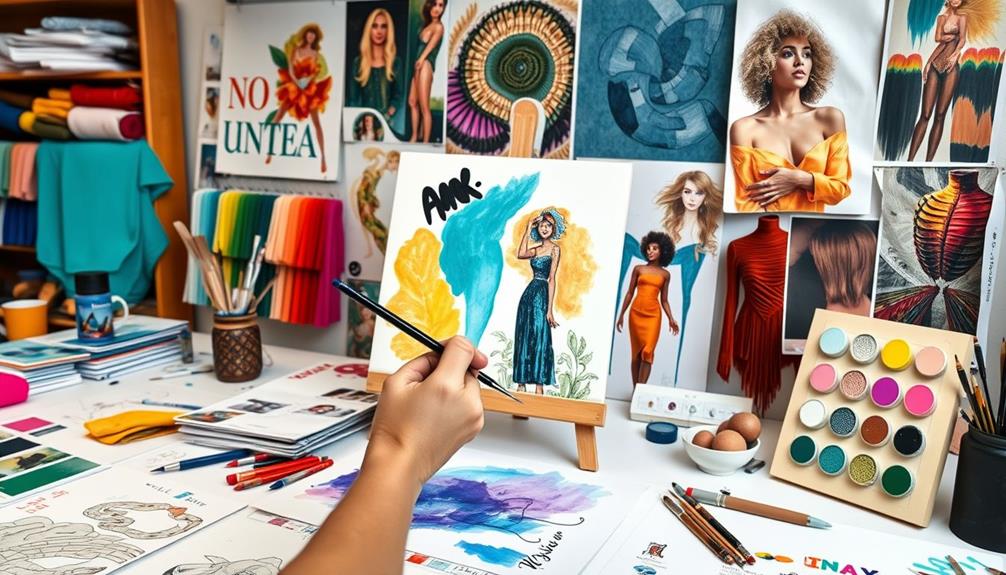
To excel in interior design, you need a solid grasp of color theory and how different hues affect emotions.
Strong spatial visualization skills will help you bring your ideas to life, ensuring everything fits perfectly within a space.
Plus, staying aware of current trends allows you to adapt and keep your designs fresh and appealing.
Color Theory Understanding
Understanding color theory is essential for anyone diving into interior design, as it shapes how clients emotionally respond to various palettes. Designers must cultivate a solid grasp of color relationships to create harmonious and visually appealing spaces. This knowledge not only enhances your designs but also greatly impacts client satisfaction.
Incorporating elements from other creative fields, such as the innovative approaches seen in mushroom coffee products, can inspire unique combinations that resonate with clients. Additionally, being conscious of sustainable practices in design can further elevate your projects and attract health-conscious customers.
To master color theory, focus on these key aspects:
- Color Relationships: Learn to identify complementary and analogous colors for balance.
- Color Temperature: Understand warm and cool tones to evoke specific atmospheres.
- Trends and Materials: Stay updated on current trends to align with client preferences.
- Emotional Influence: Recognize how colors can affect moods and feelings in a space.
- Communication: Use color theory to effectively visualize and convey your ideas.
With a firm grasp of these concepts, you'll be better equipped to create spaces that resonate with clients. Remember, mastery of color theory not only enhances your designs but also sets you apart in the competitive world of interior design.
Embrace this critical skill, and watch your creative potential come to life.
Spatial Visualization Skills
Three key spatial visualization skills can elevate your interior design projects and enhance client satisfaction.
First, the ability to intuitively rearrange furniture allows you to recognize flow issues in room layouts. This skill is essential for creating functional spaces that meet your clients' needs, similar to how a well-designed living room transformation can greatly improve the overall aesthetic of a home.
Second, when you can visualize spaces, you can suggest ideal furniture placement and additional pieces, enhancing overall design functionality. Your creativity plays an important role in ensuring every element works harmoniously together.
Lastly, effective spatial visualization is fundamental for accurately interpreting blueprints, enabling you to understand how different elements interact within a space. With strong spatial visualization skills, you can creatively solve design challenges, leading to innovative and aesthetically pleasing solutions.
If you're considering a career in interior design, honing these skills through formal education can be extremely beneficial.
You'll learn to create cohesive layouts that not only reflect your artistic vision but also align with your clients' desires. By developing your spatial awareness, you'll become a more effective designer, capable of transforming spaces into beautiful and functional environments.
Embrace these skills, and you'll be well on your way to mastering the art of interior design.
Trend Awareness and Adaptability
Staying ahead of design trends and adapting to ever-changing client preferences is essential for success in interior design. As a designer, your trend awareness and adaptability can set you apart in this competitive field.
You'll need to stay informed about current design trends and materials to create spaces that resonate with your clients. Here are some key aspects to evaluate:
- Develop a strong understanding of color theory to evoke the desired emotions in your designs.
- Cultivate an innate sense of style, ensuring your work aligns with client preferences.
- Embrace continuous education and explore diverse design styles to enhance your creative expression.
- Be open to feedback, allowing you to refine your designs based on client input.
- Adapt quickly to changing demands, keeping your designs fresh and innovative.
Business Acumen and Knowledge

Maneuvering the complexities of interior design requires a solid foundation in business acumen and knowledge. To thrive in the interior design business, you need essential business skills, including basic accounting. Understanding budgets and cost estimates isn't just helpful; it's essential for guaranteeing project viability. Without this, your projects may falter financially.
Additionally, gaining insights from related fields, such as the tiny house movement, can provide innovative ideas for optimizing space and materials in your designs.
Moreover, strong project management skills are critical. You must oversee timelines and guarantee that projects are completed within budget while satisfying your clients. This balance is key to building a reputable brand in the competitive design landscape.
Sales skills also play a significant role in your success. You'll need to attract clients and negotiate contracts effectively. This ability to market your services can help you establish a steady client base, which is vital for long-term success.
Additionally, being familiar with sustainability issues can enhance your appeal to eco-conscious clients and align your work with industry trends.
Signs You're Suitable for Design

If you have a knack for visualizing spaces and love the idea of transforming environments, you might just be suited for interior design.
Your passion for sourcing unique furnishings and reimagining layouts can set you apart in this field.
Recognizing these signs in yourself is the first step toward a rewarding career in design.
Visual Spatial Awareness
When stepping into a new space, you might instinctively rearrange furniture in your mind, revealing a natural talent for interior design. This strong visual spatial awareness is an essential component in the field.
If you find yourself doing the following, it's a sign you're suited for design:
- Recognizing flow issues in room layouts and imagining solutions.
- Suggesting furniture placements that enhance function and aesthetics.
- Visualizing different arrangements and how they affect the overall feel of a room.
- Understanding how light and shadows interact with elements in a space.
- Enjoying the process of conceptualizing and creating harmonious environments.
These abilities highlight your natural inclination toward space planning, a fundamental skill for any interior designer.
You can certainly refine these talents through education, allowing your innate skills to shine even brighter. If you love transforming spaces in your mind and can assess spatial functionality with ease, you're likely on the right path toward a fulfilling career in interior design.
Embrace your visual spatial awareness, and watch it open doors to endless creative possibilities!
Passion for Transformation
With a keen eye for detail and an unwavering desire to enhance your surroundings, your passion for transformation is an essential sign of your suitability for interior design. You likely find joy in revamping furniture and decor, demonstrating a natural inclination for design work. If you take pride in turning unattractive items into appealing decor, it shows your creative mindset, which is vital for success in this field.
Engaging in aesthetic improvements and feeling satisfied after a successful makeover reflects your enthusiasm for design. If you often immerse yourself in transforming spaces, whether at home or for friends, you're tapping into your design potential. Your daily activities may include sourcing unique materials or curating design elements, indicating a commitment to creating beautiful spaces.
This passion for transformation can guide your career path, inspiring you to explore various styles and techniques. When you actively seek out opportunities for improvement in your surroundings, you reinforce your suitability for interior design.
Embrace your creativity and channel that energy into your projects, as it's the driving force behind a fulfilling career in this vibrant field.
Technical Requirements and Training
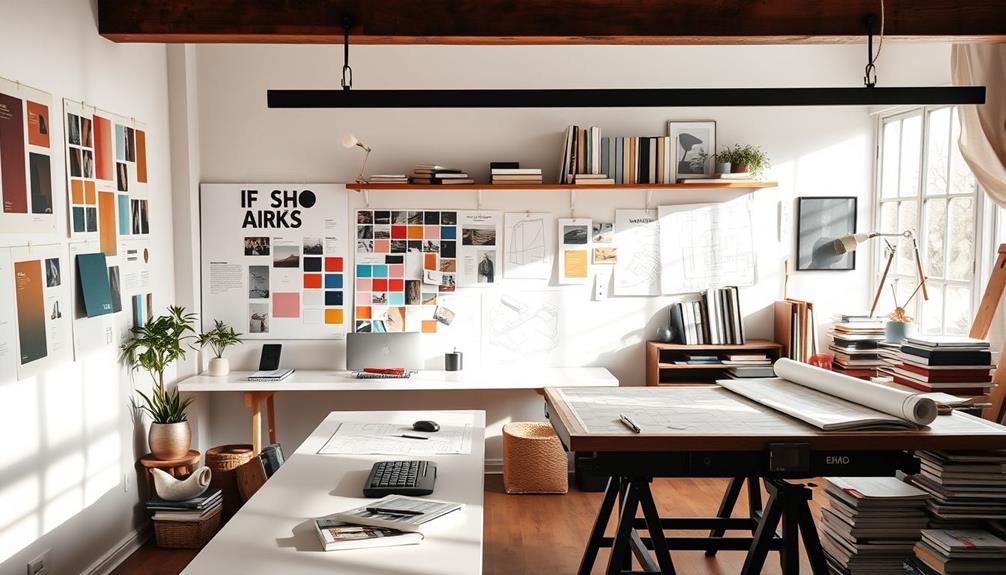
Typically, aspiring interior designers need a solid educational foundation to thrive in the field. A bachelor's degree in interior design is often required, taking around four years to complete, while associate degrees can take about two years.
Beyond formal education, gaining practical experience through on-the-job training is vital. It helps you understand company operations and project workflows.
To excel, you'll need to focus on the following technical requirements:
- Proficiency in computer-aided design (CAD) software for creating accurate design plans
- Familiarity with tools like measuring tapes and drafting scales
- Knowledge of building codes and industry regulations
- Continuous education and certification, especially if you plan to work independently in certain states
- Strong project execution capabilities that enhance your design process
These skills not only improve your technical abilities but also guarantee you meet industry standards.
As you start on your journey, remember that a combination of education, hands-on experience, and ongoing learning will set you up for success in the dynamic world of interior design.
Problem-Solving Capabilities
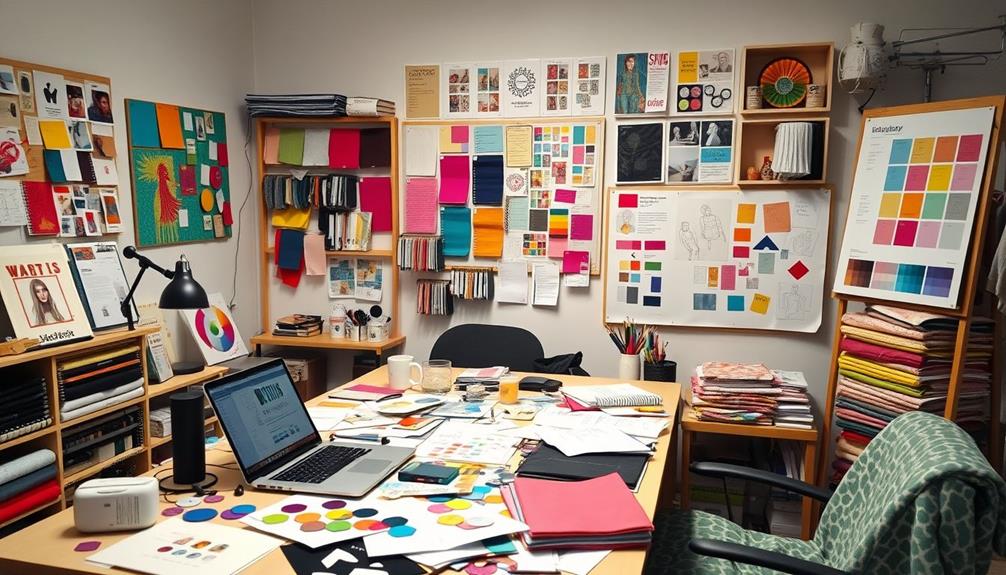
Interior designers' ability to tackle challenges head-on is essential for the success of any project. With unique challenges arising frequently, your problem-solving skills will be put to the test. You'll need to work within budget constraints while still achieving client satisfaction. Adapting quickly to changing client demands is a must, showcasing your knack for resolving issues on the fly.
To give you an idea of what effective problem-solving looks like in interior design, here's a simple breakdown:
| Challenge Type | Problem-Solving Approach | Outcome |
|---|---|---|
| Budget Constraints | Prioritize essential elements | Maximized design impact |
| Client Changes | Open communication and flexibility | Improved client satisfaction |
| Complex Design Issues | Break down into manageable components | Innovative solutions |
| Time Limitations | Efficient planning and delegation | On-time project delivery |
Successful designers make each project a series of interconnected problems to solve. By utilizing brainstorming techniques, you can generate effective design outcomes that truly resonate with your clients. Embrace these challenges, and you'll find interior design can be a rewarding field.
Interpersonal Skills for Designers

Problem-solving in interior design often goes hand in hand with strong interpersonal skills. As a designer, you need effective communication skills to collaborate with clients, architects, and contractors. This guarantees that everyone is aligned on project goals and expectations.
Your interpersonal skills will help you build strong relationships with clients, allowing you to understand their needs and preferences—crucial for creating personalized spaces. Additionally, understanding the nuances of clients' emotional landscapes can enhance your approach to design, especially when traversing their personal stories and experiences, akin to the insights gathered from astrological compatibility.
Here are some key interpersonal skills you should focus on:
- Active listening: Pay attention to clients' ideas and concerns.
- Empathy: Understand your clients' emotions and aspirations.
- Conflict resolution: Mediate differing opinions among clients and professionals.
- Networking: Connect with potential clients and industry experts.
- Trust-building: Create an environment where clients feel comfortable sharing personal information.
These skills contribute to your effectiveness as a designer. By mastering interpersonal skills, you'll not only enhance your communication capabilities but also foster relationships that lead to successful projects.
Career Transition Pathways
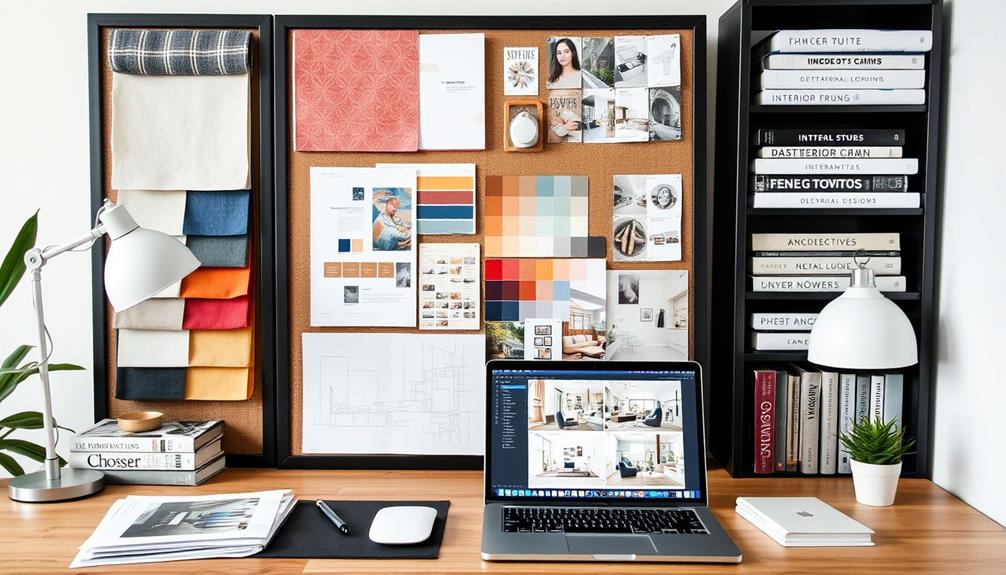
Making a career shift into interior design can be both exciting and intimidating. To ease your change, start by evaluating your current skills and experiences that may align with a career in interior design. Necessary skills like project management and artistic abilities can be invaluable.
Next, research the educational requirements. A bachelor's degree in interior design is often essential, and you may need additional certifications depending on your state. Hands-on learning opportunities such as internships or workshops will help you gain practical experience and understand daily tasks.
Networking with industry professionals is important. Seek mentorship to learn about potential challenges and rewards in your new career.
Finally, evaluate your passion for design and commitment to continuous learning, as this field constantly evolves. Here's a quick overview to guide you:
| Action Steps | Details |
|---|---|
| Evaluate Skills | Identify transferable skills |
| Research Education | Look into degree and certification needs |
| Gain Experience | Pursue internships or workshops |
| Network | Connect with industry professionals |
| Commit to Learning | Stay updated on trends and technologies |
Conclusion
If you're drawn to transforming spaces, if you thrive on creativity and collaboration, if you're ready to invest time and resources, then interior design might just be your calling. Picture yourself blending colors, envisioning layouts, and solving problems—all while connecting with clients and making their dreams a reality. Embrace the challenges, nurture your skills, and let your passion guide you. The world of interior design awaits, filled with opportunities to create, inspire, and innovate. Consider enrolling in a reputable interior design program to gain a strong foundation in design principles and industry tools. Familiarize yourself with autocad basics for interior design, as this software is commonly used in the industry for creating technical drawings and plans. Additionally, seek out internships or mentorships to gain hands-on experience and network with professionals in the field. With dedication and determination, you can turn your passion for interior design into a fulfilling and successful career.
